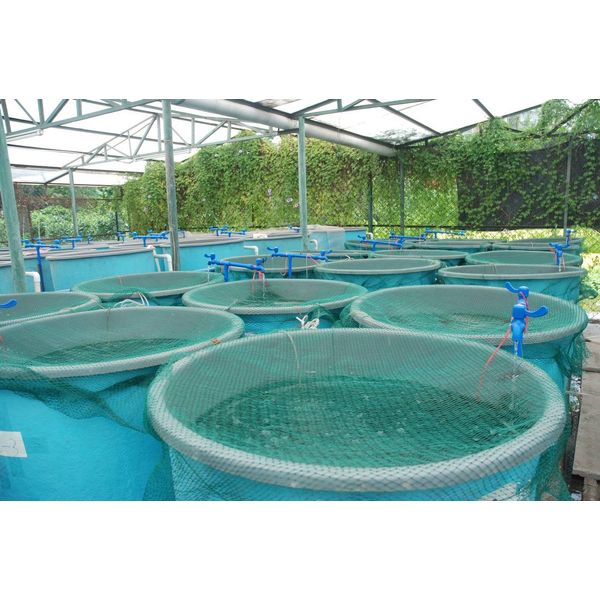

- Home
- Companies
- Emoyeni-Training
- Articles
- Project - Fisheries and Aquaculture
Project - Fisheries and Aquaculture
Characteristics, structure and resources of the sector
Summary
South Africa has suitable environmental conditions for aquaculture development and opportunities for commercial production of various cultured species. The local aquaculture sector has performed below its potential and remains a minor contributor to national fishery products and the country’s GDP. However, more focus is being placed on the major constraints that have been limited to aquaculture growth. Constraints such as access to water and land, access to technology, high transaction costs, lack of supporting policies and legislation, and barriers to marketing are currently being addressed by the administrative authorities, namely the Department of Agriculture, Forestry and Fisheries.
In 2009 and 2010, South Africa had undergone some changes with regard to aquaculture management and administration. Previously, the sector was managed by two Government Departments, namely the former Department of Environmental Affairs and Tourism (DEAT) and the Department of Agriculture (DoA) responsible for marine and freshwater aquaculture, respectively. The two Departments were restructured, forming one leading agent for the development and management of aquaculture in South Africa, now called the Department of Agriculture, Forestry and Fisheries (DAFF). The total marine aquaculture production (excluding seaweed) in 2011 was 1 883 tonnes, with an estimated value of 379 million Rands. The abalone subsector was the highest contributor to total production making up 55 percent of the total production, followed by mussels with 35.1 percent, oysters with 14.3 percent and finfish with 0.4 percent. The total freshwater aquaculture production was 2 921 tonnes for 2011. Trout contributed 49 percent of the total production, followed by ornamentals, koi carp, catfish and tilapia which contributed 23, 20, 5 and 3 percent, respectively.

Rainbow trout (Oncorhynchus mykiss) farming is the oldest aquaculture subsector in South Africa. According to Hecht and Britz (1990), the first batch of seed was imported in 1896 and the first dry pelleted feeds in 1956. The major areas of production of trout occur in the Western Cape and Mapumalanga regions and in 2010 contributed to the total aquaculture production, approximately 950 tonnes. With regards to marine aquaculture, the oldest form of marine aquaculture is oyster farming, which was initiated in 1673 and 1676 when attempts to culture the indigenous species were made. It was only in 1948 when the first commercial operation proved success. By far, the largest marine aquaculture subsector in South Africa is abalone (Haliotis midae). Abalone farming initiated in South Africa in the early 1990s and included a number of small operators and by 1997 the first 10 tonnes were produced. Abalone production occurs in the Western Cape are with the majority of farms situated in the Overberg region.
Trout
Trout aquaculture in South Africa is limited by the high temperatures that are widespread throughout the subcontinent, as well as the lack of suitable water for culture. Trout requires temperatures below 18 ºC which therefore, restrict the sites to small streams in the higher altitude catchments. As a result, much of the national trout culture is concentrated around the foot of the Drakensburg and Midlands areas of KwaZulu-Natal and the higher regions in Mpumalanga and the Eastern and Western Cape Provinces.
Tilapia
The optimal temperatures for Mozambique tilapia (Oreochromis mossambicus) culture falls between 28 and 30 ºC, therefore, the most thermally efficient areas to culture tilapia would be the areas that experience warm summers and warm winters such as the Northern Province, Limpopo, Mpumalanga and Northern KwaZulu-Natal. The majority of tilapia farms are located in the tropical regions of the country where high temperatures are prominent throughout the year.
Catfish
North African catfish (Clarias gariepinus) may be cultured throughout most lowland areas of South Africa with the current technology used. However, the optimal temperature for culturing is 28 ºC, therefore, the most efficient areas would be the Northern Province, Limpopo, Mpumalanga and Northern KwaZulu-Natal, which experience warm summers and relatively warm winters.
Carp and Koi Carp
Environmental conditions for carp culture is good throughout much of the lowland area of South Africa, However, sites require access to suitable water.
Marron crayfish
Marron crayfish (Cherax tenuimanus) is a cold water species, and therefore, the industry is based in the Western Cape where temperatures are much lower.
Ornamental freshwater fish
Using current technology, ornamental freshwater fish can be farmed in all parts of South Africa.
Related Links:- Full read for above - https://www.fao.org/fishery/en/countrysector/za/en?lang=en
- Freshwater Fish Farming in South Africa - https://southafrica.co.za/freshwater-fish-farming-south-africa.html
